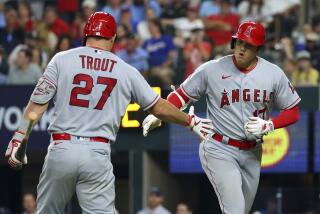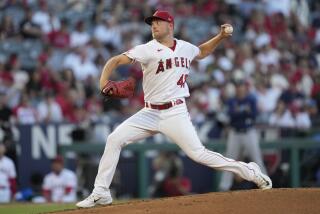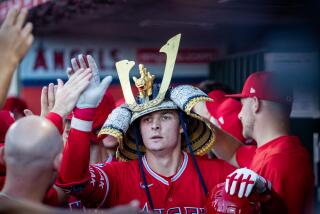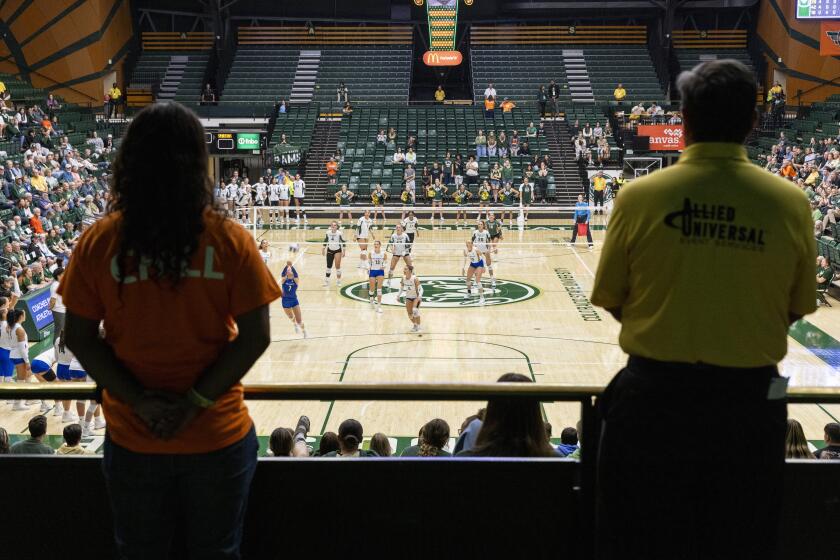Angels ramp up the defensive shifts under new manager Brad Ausmus
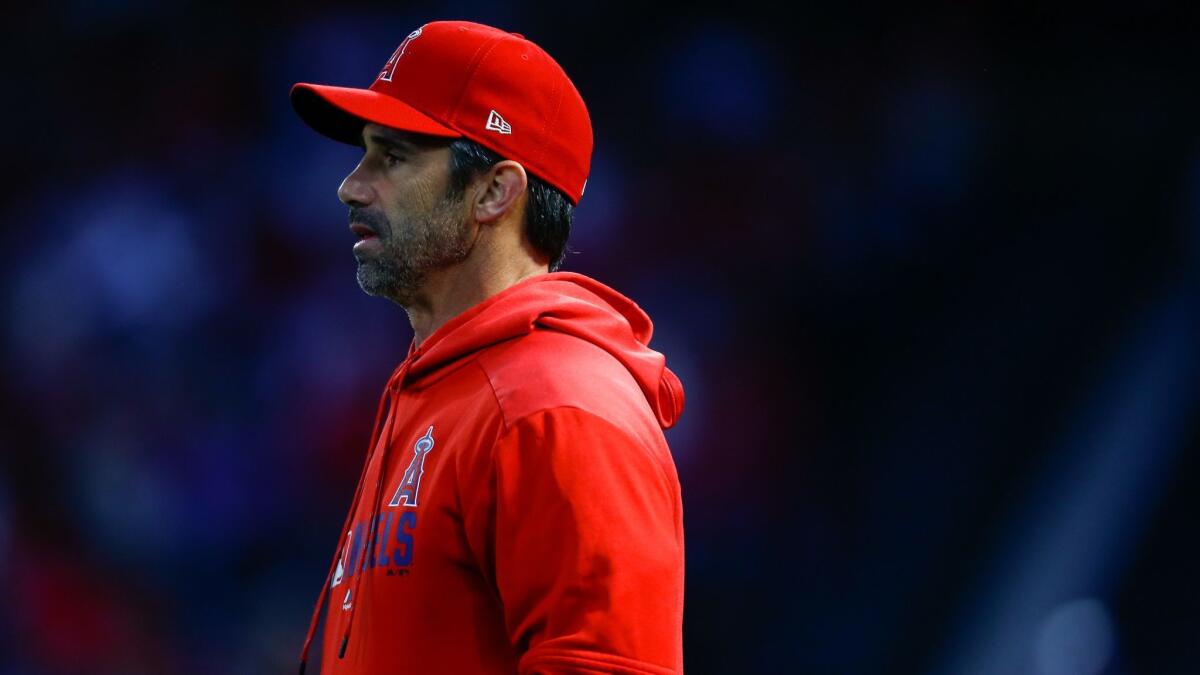
The Angels are on pace for more than 1,000 defensive shifts this season, a striking increase from their 648 shifts in 2018.
Those numbers reflect a marked contrast between the approach under new manager Brad Ausmus and former manager Mike Scioscia, who wasn’t always quick to embrace the defensive analytics that have emerged in recent years.
Not that the man in the middle of almost all of those shifts has noticed.
“I didn’t even know,” Angels shortstop Andrelton Simmons said. “I don’t look that much at certain numbers. I feel like we’ve done a few more shifts against right-handed hitters, but with the left-handers, I feel like it’s pretty similar.”
The Angels are still among the bottom third in infield-altering alignments, entering Monday night’s game with 145 shifts in 821 plate appearances, according to Baseball Savant, a 17.7% rating that ranks 21st in baseball.
The Milwaukee Brewers (395 shifts in 878 plate appearances) and Minnesota Twins (323 in 718) lead the major leagues with a 45% shift rate.
The Angels shifted 89 times (23.4%) in 381 plate appearances against left-handed hitters and 56 times (12.7%) in 440 plate appearances against right-handed hitters. The Angels allowed a .326 batting average, sixth-highest in baseball, on balls in play against the shift through 22 games, according to Fangraphs.
“My guess is that average will come down,” Ausmus said. “I would say the sample size isn’t big enough to make any sense of it.”
Simmons doesn’t overthink his positioning, letting the stat analysts provide direction.
“I don’t know, and I have not asked,” Simmons said, when asked if he felt like the shifts have worked. “I do as I’m told, for the most part. They crunch the numbers. I’m sure they have a reason for where they position us, so I’m not going to stand here not having all the information and tell them, ‘Oh no, that’s not right.’ ”
Players and fans have grown so accustomed to shifts they barely raise an eyebrow when a second baseman, stationed in shallow right field, robs a left-handed slugger of a hit.
But they notice when a hitter shoots a grounder through a gaping hole, like the Seattle Mariners’ Jay Bruce did Thursday when he rolled a single through a vacated shortstop spot for the decisive run batted in during the ninth inning of an 11-10 win over the Angels.
“Jay Bruce was definitely trying to beat the shift,” Angels infielder Zack Cozart said. “What I’ve been told is you’d rather him do that than hit a home run, but I don’t think so, because that was the game-winning hit.”
In Sunday’s 8-6 win over Seattle, Simmons was stationed directly behind second base for left-handed-hitting Daniel Vogelbach, who twice hit grounders right at him for outs.
Sign up for our daily sports newsletter »
“Every once in a while,” Simmons said, “it pays off.”
How do the Angels determine when and where to shift?
“Quite frankly, we just follow the data,” Ausmus said. “Where guys hit the ball based on the pitcher’s attributes, velocity of pitches, hitter’s attributes, whether he hits the ball more on the ground or in the air, where he hits it. That’s basically all it is.”
Short hops
Left-handed-hitting outfielder Brian Goodwin, who entered Monday with a .346 average, 1.051 on-base-plus-slugging percentage, three homers and nine RBIs, got his second straight start against a left-hander, with the right-handed Peter Bourjos on the bench. The two had platooned for the first three weeks. “I think he’s earned his way to an opportunity against left-handed pitching,” Ausmus said of Goodwin. … Chris Stratton is scheduled to start Tuesday night, but Ausmus said there’s a “possibility” he may use a reliever as an “opener,” like the Angels did with Hansel Robles on Sunday. … Andrew Heaney (elbow inflammation) is getting closer to throwing off a mound, but the left-hander will need at least a month to build up the endurance required to join the rotation.
More to Read
Go beyond the scoreboard
Get the latest on L.A.'s teams in the daily Sports Report newsletter.
You may occasionally receive promotional content from the Los Angeles Times.

